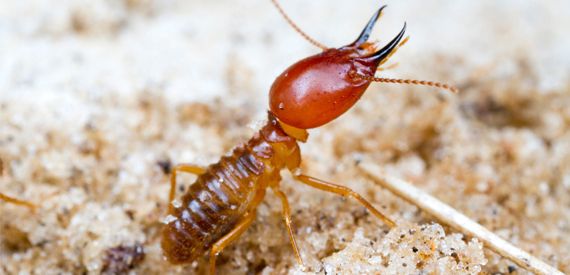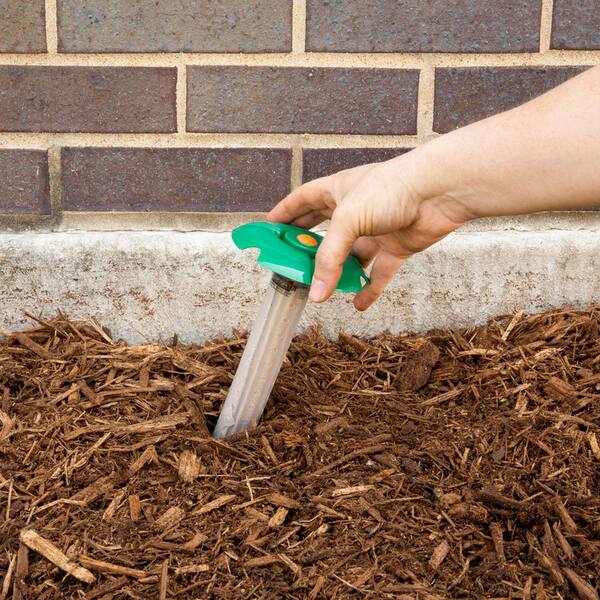Termite Troubles: Revealing the very best Therapy Solutions for Full Eradication
Termite infestations can create mayhem on structures and homes, triggering comprehensive damage and economic implications. By discovering the subtleties of termite behavior, ingenious inspection methods, and preventative steps, we can reveal the most efficient approaches for total obliteration.
Recognizing Termite Behavior
In order to properly battle termite problems, it is important to understand the complex habits and practices of these damaging parasites. The reproductive termites, additionally understood as swarmers, are accountable for developing brand-new swarms.
Termite habits is influenced by environmental aspects such as moisture, food, and temperature schedule. They are brought in to wood and cellulose materials, making buildings with wood frameworks particularly susceptible to invasions. Comprehending the foraging patterns, nesting choices, and interaction approaches of termites is essential for developing reliable therapy methods.
Examination Methods for Detection
Recognizing termite behavior lays the foundation for executing efficient evaluation techniques for detection in identifying and addressing termite infestations - termite control. Assessment methods play a critical duty in identifying the visibility of termites early, stopping extensive damage to frameworks. One usual technique is visual inspection, where experienced specialists very carefully analyze the interior and exterior of a home for signs of termite task such as mud tubes, disposed of wings, or wood damages. Furthermore, tapping on timber surface areas to pay attention for a hollow sound can show termite existence.
Acoustic exhaust devices can spot termite activity by listening for the noises created by termites as they move and feed within wood structures. Implementing a combination of these inspection techniques can enhance the accuracy of discovering termite invasions and allow prompt treatment to eradicate the bugs efficiently.
Chemical Treatments for Removal

Another chemical therapy choice is termite lures, which are positioned in the ground around a residential or commercial property and consist of slow-acting poisonous materials that termites carry back to their colony, ultimately resulting in the elimination of the whole termite populace. ant control. Fumigation is also a powerful chemical treatment method that involves enclosing a framework and launching gas to permeate the timber and kill termites present within
When thinking about chemical treatments for termite removal, it is important to consult with a professional pest control expert to determine the most ideal strategy based upon the degree of the infestation and the type of termites entailed.
All-natural Treatments for Eco-Friendly Solutions

One prominent all-natural treatment is orange oil, stemmed from orange peels, which has substances that are toxic to termites upon contact. This therapy is used straight to ravaged locations, where it passes through the exoskeleton of the termites, bring about their death.
An additional eco-friendly choice is neem oil, extracted from the seeds of the neem tree. Neem oil disrupts the development and growth of termites, inevitably triggering their population to decline.
Additionally, using advantageous nematodes in termite-infested soil can aid regulate termite populaces naturally. These microscopic organisms prey on termite larvae, properly lowering the variety of termites present in the affected location.
Safety Nets to Prevent Infestations
To proactively guard your property against termite infestations, executing precautionary procedures is vital. In addition, take into consideration mounting termite obstacles or treated wood during building and construction or improvements to hinder termite task. By being aggressive and carrying out these preventative procedures, you can substantially minimize the danger of termite invasions and safeguard your home from pricey damages.
Final Thought
To conclude, termite invasions can cause significant damages to structures if left neglected. Understanding termite actions, making use of efficient evaluation techniques, and applying chemical or all-natural treatments are essential for complete obliteration. By taking precautionary steps to avoid problems, property owners can protect their homes from costly damages. It is essential to address termite problems quickly to make certain the lasting integrity of structures and avoid future problems.
Recognizing termite behavior lays the structure for applying effective assessment techniques for detection in recognizing and resolving termite infestations. Acoustic discharge tools can spot termite activity by paying attention for the noises generated by termites as they feed and move within wood structures. Implementing a mix of these assessment strategies can enhance the accuracy of identifying termite invasions and make it possible for prompt treatment to eliminate the bugs properly.
Effective removal of termite invasions commonly entails the strategic application of specialized chemical treatments. ant control conover nc. In addition, consider installing termite barriers or treated timber throughout building and construction or improvements to hinder termite task